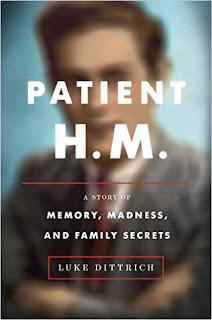Rêver au XIXe siècle
Appel à contributions
Revue Romantisme n°2017-4
sous la responsabilité de Jacqueline Carroy
Même si l’on peut identifier les prémisses de cette position au siècle précédent, c’est sans doute une nouveauté propre au XIXe siècle
que de vouloir démystifier tous les rêves. La distinction entre rêves
ordinaires naturels et rêves extraordinaires, telle qu’avaient pu
l’accréditer plusieurs traditions dans des registres variés
(religieuses, onirocritiques, populaires, poétiques…) est remise en
cause. Rêve et songe deviennent en français des substantifs synonymes tandis que les verbes songer et rêver se chargent de sens différents : rêver renverrait dès lors principalement aux visions et aux voix de la nuit ; songer et penser
tendraient à se rapprocher. Ce nouveau partage terminologique est lié à
un mouvement de sécularisation et de naturalisation qui identifie rêves
et songes sous le signe d’une même activité, banale, du corps et de
l’esprit, qualifiée d’involontaire, d’automatique, d’inconsciente ou de subconsciente
au cours du siècle, tournée dans l’ensemble vers le passé plus que vers
l’avenir, et en tous les cas sans caractère surnaturel ou
extra-naturel.
Le sommeil et les rêves sont soumis à l’épreuve de l’observation, de
l’expérience et de l’enquête par des philosophes, des médecins, des
psychiatres, mais aussi par des amateurs savants ou cultivés, qui
veulent édifier une science ; les diaristes les consignent, soucieux de
scruter leur subjectivité. Bien avant Freud, écrire, collecter et
parfois dessiner ses rêves et ceux des autres renvoient à une activité
de savoir, parfois thérapeutique, parfois chargée d’enjeux
autobiographiques ou esthétiques. La science des rêves émergente mène un
combat contre les « superstitions » de toutes sortes qui assignent aux
visions de la nuit un sens prémonitoire ou prophétique et en surestiment
la valeur. Cependant certains savants, et non des moindres, peuvent
chercher à ré-enchanter les songes, dans le cadre de ce que l’on appelle
par exemple « les sciences psychiques », équivalent approximatif de ce
que l’on nommera ensuite la parapsychologie.
Il peut être intéressant d’explorer les « pays des rêves » du XIXe
siècle, pour reprendre une expression de Charles Nodier : ceux des
rêves ordinaires, comme ceux des rêves extraordinaires dont ils se
démarquent, si possible dans des aires linguistiques et culturelles
européennes différentes. Plus précisément, à partir de ce propos
général, il s’agit, en menant des études de cas précises, de mettre au
jour des frontières, mais aussi des intersections et des syncrétismes,
ou encore de se demander en quoi la science des rêves a inspiré d’autres
approches d’ordre littéraire et artistique, et réciproquement en quoi
celles-ci ont affecté les approches savantes. Cela implique d’identifier
des ruptures et parfois des circulations d’un pays des rêves à l’autre,
des pratiques inédites, contrastées ou hybrides de mise en forme –
narratives, poétiques ou plastiques -, d’expériences nocturnes.
Ce dossier de la revue Romantisme vise à proposer de mener
une approche de l’histoire des rêves à la croisée de la psychologie, de
la physiologie, de la psychiatrie, de la littérature, de l’art et de la
religion. Le projet entend mobiliser des chercheurs qui s’intéressent
aux différentes conceptions et pratiques d’un rêver qui affecte au XIXe
siècle, de façon différente mais parfois proche, ceux et celles qui
passent leurs visions nocturnes au crible des traités savants de toutes
sortes, des livres des romanciers et des poètes, des gravures et des
tableaux, mais aussi de la Bible et des Clefs des songes.
Les propositions de contribution sont attendues
pour le 15 septembre
2016, sous la forme d’un résumé de 300 mots environ assorti d’une courte
bibliographie. Elles doivent être adressées à Jacqueline Carroy,
coordinatrice du dossier (
jacqueline.carroy@wanadoo.fr).
Le sommaire définitif sera établi en octobre 2016.
Les articles (de 30 000 signes espaces compris maximum) devront être
remis le 31 mars 2017 au plus tard, mis aux normes typographiques de la
revue et assortis d’un résumé de 800 signes.











